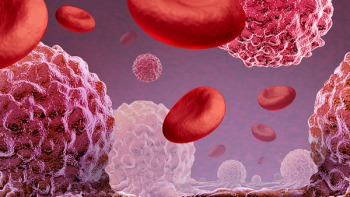
Eating Tips for When Cancer Treatment Makes Meals Challenging
Key Takeaways
- Soft, high-calorie foods like Greek yogurt and mac and cheese are recommended for easy swallowing and protein intake.
- Enhancing flavors with spices, tomato, or citrus can help counteract taste changes due to cancer therapy.
Greek yogurt, egg salad, avocado and mac and cheese are easy-to-swallow, high-calorie foods that can help patients maintain strength during cancer treatment.
Kanisha Parikh, a dietitian at John Theurer Cancer Center, shares tips with CURE for helping patients with cancer maintain nutrition when eating becomes difficult.
Greek yogurt, egg salad, tuna with mayo, mashed avocado and gooey mac and cheese are soft, high-calorie options that are easy to swallow and rich in protein. Chopping foods finely and adding sauces helps in the early stages of cancer treatment, while blending or choosing naturally soft foods like pudding may be best as symptoms progress.
For patients experiencing taste changes due to cancer therapy, Parikh suggests boosting flavor with extra spices and using tomato or citrus to enhance meals. When appetite is low or eating is painful — small, frequent meals with full-fat dairy, olive oil and protein shakes can help preserve weight and muscle. For hydration, broths, ice pops and juicy fruits may be easier than plain water, according to Parikh.
CURE: What are some high-calorie, high-protein foods that are easy to swallow for a patient with cancer?
Parikh: Foods that are easy to swallow include Greek yogurt, because it’s nice and thick, and other soft, moist options. Chicken salad or tuna fish with a good amount of mayonnaise, egg salad, mashed avocado — even cheesy, gooey mac and cheese — all of those are easier to swallow and provide both protein and calories.
Are there specific textures or food prep methods, like blending or puréeing, that make eating easier or more comfortable, especially with spices?
Definitely. At the beginning stages of treatment, chopping foods very finely — without needing to fully purée them — and adding sauces, gravies or other liquids to keep things moist is really helpful. As time goes on, it might be best to move toward puréed foods using a blender or immersion blender. Or you can choose naturally soft foods like yogurt or pudding.
What tips do you have for patients who have lost their sense of taste or have altered taste due to treatment?
One tip is to really pack on the seasoning — use more spices and seasonings than you normally would, since the sense of taste is diminished. Two flavors that still tend to come through well are tomato and citrus. Cooking something like soft meatballs in tomato sauce, or adding lemon juice to chicken or tuna salad, can help enhance flavor.
How can patients maintain their weight and muscle mass if eating becomes painful or they have little appetite?
In those cases, small, frequent meals are key. Focus on calorie- and protein-dense foods — use full-fat dairy, add olive oil, and choose high-calorie options. Protein shakes, whether store-bought or homemade, are also a great way to get in extra nutrition.
How can patients stay hydrated when water feels uncomfortable or causes coughing?
There are alternatives to plain water. If swallowing is safe, try thicker options like broth-based soups or gelatin. Ice pops can also help, as can water-rich foods like watermelon and cucumbers — either sucking on them or eating them, depending on what’s manageable.
How can caregivers support healthy eating habits for loved ones undergoing treatment?
One of the most helpful things caregivers can do is prepare meals. Fatigue is common, so having meals ready to go — especially ones that are soft, moist and easy to swallow — can make a big difference in helping patients maintain their nutrition.
Transcript has been edited for clarity and conciseness.
For more news on cancer updates, research and education,





